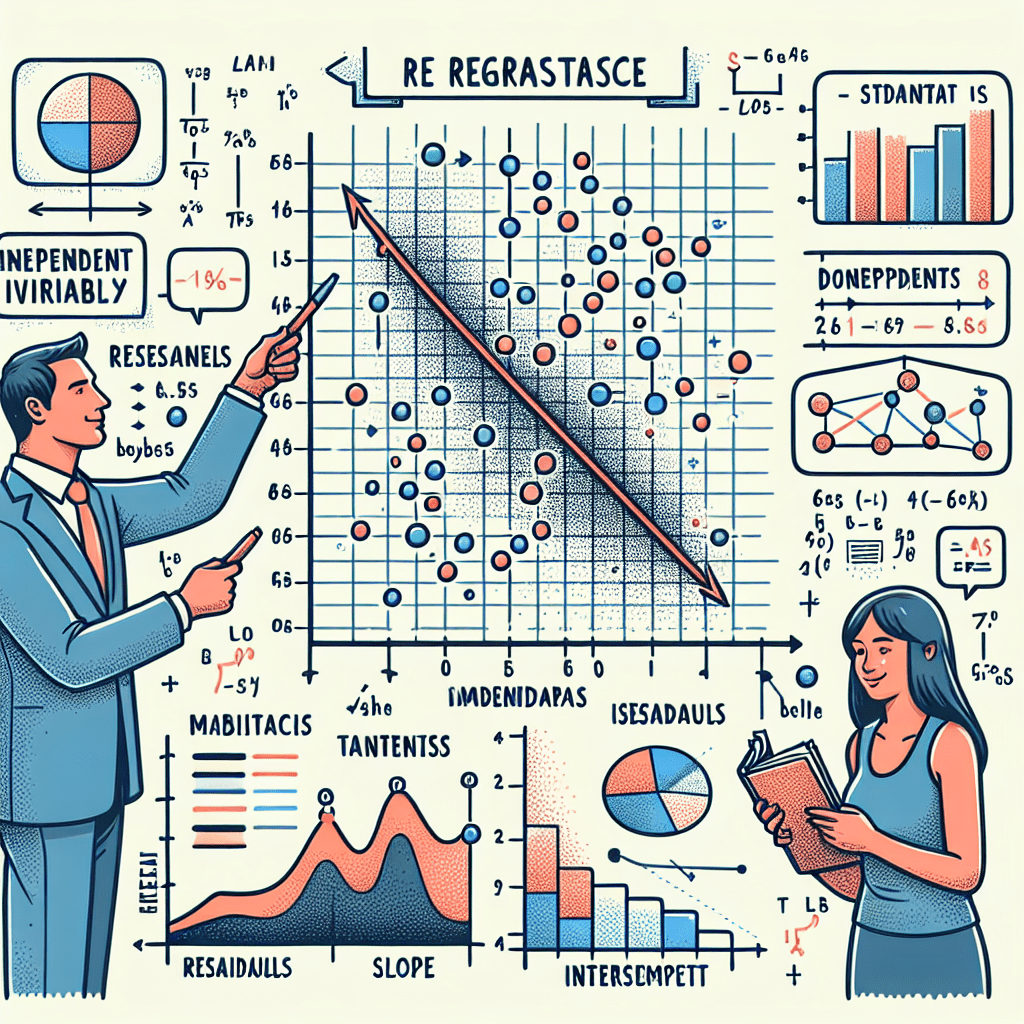Linear Regression Explained: A Simple Guide for Aspiring Data Scientists
Linear regression is one of the foundational techniques in data science and machine learning. If you’re new to the field, understanding linear regression is a great starting point. This article will break down the concept in a clear, friendly, and easy-to-understand manner.
What is Linear Regression?
At its core, linear regression is a statistical method that models the relationship between two variables by fitting a linear equation to observed data. One variable is considered to be an explanatory variable, and the other is considered to be a dependent variable.
Imagine you have a scatter plot of data points. Linear regression helps you draw the best-fit straight line through these points. This line can then be used to predict values.

The Equation of a Line
Remember the equation of a straight line from high school math? It’s typically written as:
[ y = mx + c ]
Here:
– ( y ) is the dependent variable (the outcome you want to predict).
– ( x ) is the independent variable (the input feature).
– ( m ) is the slope of the line (how much ( y ) changes for a unit change in ( x )).
– ( c ) is the y-intercept (the value of ( y ) when ( x ) is 0).
In the context of linear regression, this equation becomes:
[ \hat{y} = \beta_0 + \beta_1 x ]
Where:
– ( \hat{y} ) is the predicted value.
– ( \beta_0 ) is the intercept.
– ( \beta_1 ) is the slope.
How Does Linear Regression Work?
Linear regression works by finding the best-fitting line through your data points. The “best fit” is determined by minimizing the sum of the squared differences between the observed values and the values predicted by the line. This method is known as “Ordinary Least Squares” (OLS).
Steps to Perform Linear Regression
- Collect Data: Gather data that includes both the dependent and independent variables.
- Plot Data: Visualize the data to see if a linear relationship seems reasonable.
- Compute the Line: Use statistical software or a programming language like Python to calculate the best-fit line.
- Interpret the Results: Understand the slope and intercept to make predictions.
Example: Predicting House Prices
Let’s say you want to predict house prices based on their size. You have data on various houses, including their sizes (in square feet) and their prices.
- Collect Data: You gather data on 100 houses.
- Plot Data: You create a scatter plot with house size on the x-axis and price on the y-axis.
- Compute the Line: Using Python’s
scikit-learnlibrary, you fit a linear regression model. - Interpret the Results: You find that the slope (( \beta_1 )) is 200 and the intercept (( \beta_0 )) is 50,000. Your regression equation is:
[ \hat{y} = 50,000 + 200x ]
This means that for every additional square foot, the price increases by $200. If a house is 1,000 square feet, the predicted price is:
[ \hat{y} = 50,000 + 200 \times 1000 = 250,000 ]
Assumptions of Linear Regression
For linear regression to be effective, certain assumptions should be met:
- Linearity: The relationship between the independent and dependent variable should be linear.
- Independence: Observations should be independent of each other.
- Homoscedasticity: The residuals (errors) should have constant variance.
- Normality: The residuals should be normally distributed.
Advantages and Disadvantages
Advantages:
– Simple to understand and implement.
– Computationally efficient.
– Easy to interpret coefficients.
Disadvantages:
– Assumes a linear relationship.
– Sensitive to outliers.
– Can’t handle complex relationships well.
Conclusion
Linear regression is a powerful and intuitive tool for understanding relationships between variables and making predictions. By grasping the basics of linear regression, you lay a strong foundation for more advanced data science and machine learning techniques. Whether you’re predicting house prices, sales, or any other metric, linear regression is a valuable tool in your data science toolkit.
Happy learning, and may your data always be linear!

Boost Your Skills in AI/ML
